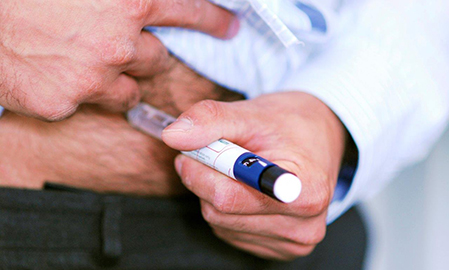Diabetes can be a business opportunity for a pharmaceutical company—but it can also be a drag on the economy if looking at state health costs. A report released by the Department of Health and Human Services Thursday shows why. The condition, which is associated with other health risks including heart disease and eye disease, triggers around $245 billion in condition-maintenance costs a year, and diabetes patients tend to have health expenses that are 2.3% higher than patients who do not have blood-sugar issues.
A more granular look shows just how these larger numbers add up, and it’s not just because diabetes medications are the most expensive non-specialty treatments. HHS reports that the number of doctor visits for diabetes patients totaled 53.7 million visits for patients 65 and older, which averages to around 1,380 visits per 1,000 patients. Younger diabetics, meaning 25 and below, averaged around 20 visits per 1,000 patients.
Diabetes patients were also plagued by multiple chronic conditions, with the number of chronic problems increasing with the patient’s age. While over half of the 25-and-under diabetic patients had at least two co-morbid conditions, 35% of the 65-and-over crowd were juggling at least four.
And here’s where the opportunity/money-eating divide surfaces: 85% of physician visits ended with a prescription or a patient’s being directed to stick with the medications they’ve got.
The number of medications patients end up juggling increases with age—35% of visits by diabetics between the ages of 25 and 44 concluded with the patient being told to stick with a medication regimen that included at least five drugs, or being given additional prescriptions that brought their diabetes-related prescription load to five or more. Senior diabetics also ended up wrestling with five or more diabetes medications, but in this case that final count occurred at 60% of the visits.








